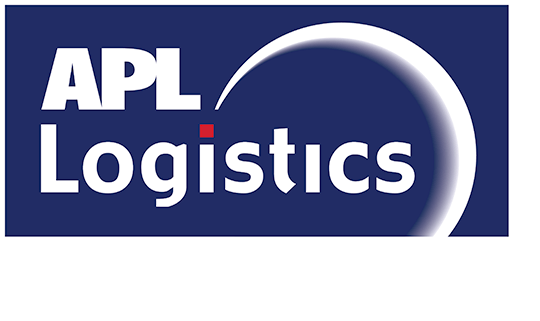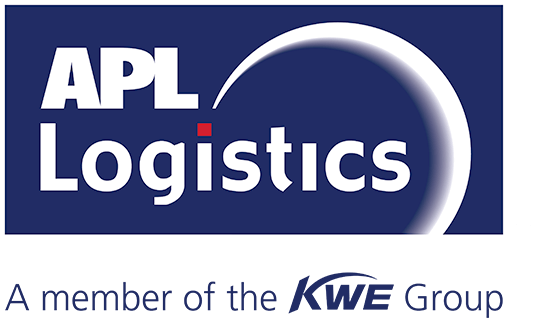October 31, 2023 in ARTICLES
Christmas Trees Don’t Sell Well on the 26th of December
Are your purchase orders planned for success – or doomed to fail? Despite evolving demand-sensing practices and technologies, many companies struggle to effectively link demand and supply, and the flow of products. In this article, we will explore the dynamics of purchase order planning and discuss how to achieve more successful planning – before you execute.
AS THE HOLIDAY SEASON DRAWS NEAR, SANTA’S CONCERNS GROW AS HE THINKS ABOUT DELIVERING ALL THE RIGHT CHRISTMAS PRESENTS TO CHILDREN – ON TIME AND IN FULL.
The demand has changed – yet again. Kids’ wish lists used to be more predictable back in the days when their main source of inspiration was the ads in catalogs featuring toys sold in stores. But social media, multiple sales channels online / offline, stores, ecommerce, real-time, you name it, have made kids’ expectations a lot more complex to meet. Not to mention the locations where the stuff is made, most of which are on the other side of the planet, typically involving 100s of suppliers across many physical locations.
So, for Santa to meet her KPIs and successfully satisfy the expectations of kids around the world requires a lot of complex planning, REALLY tight alignment between MANY parties, multiple departments within a company, and a magnitude of external parties, including but not limited to the distribution network.
As we all know, that is a lot easier said than done. Insufficient alignment, broken links in the planning process, and the interaction between multiple departments in a company, coupled with human behavior that, more often than not, is not resolved through AI and Machine Learning, etc., are realities that continue to cause implications in many companies’ supply chains – impacting their revenues, profitability, and their ability to satisfy their customers.
THIS ARTICLE IS NOT ABOUT CHRISTMAS TREES OR CONCERNS THAT KEEP SANTA UP AT NIGHT BUT OUR PERSPECTIVES ON COMPANIES’ CONTINUOUS CHALLENGES IN GETTING THE RIGHT PRODUCT TO THE RIGHT PLACE AT THE BEST COST AND LOWEST POSSIBLE CARBON EMISSIONS.
Very often, we observe difficulties within companies to produce a demand signal in the purchase order that enables companies to connect demand and supply and flow of products from the source to the point of consumption in an efficient way. On top of that, many individual human decisions, based on perception or gut feeling, further complicate the planning and execution – and increase costs.
At APL Logistics, we increasingly engage in the order planning aspect of the process, as we know this is where many supply chain inefficiencies can be resolved. We typically receive purchase orders from customers 3-4 months before the products ship from production origins, i.e., at a point where planning adjustments ARE possible and CAN significantly improve the basis on which we execute the physical move of products at a later stage.
By experience, roughly 10% of the purchase orders we receive from customers are already doomed to fail when we receive those purchase orders, which is typically at the point of time where the purchase order is issued by the customer. Doomed to fail – means that POs are planned to arrive at the destination hub either too early, too late, or planned inefficiently from a supply chain cost and carbon emission standpoint.
Let’s look at the financial implications of such planning:
First, let’s look at products planned so that they will arrive at the destination later than needed. Historically, the aggregated sales value of the purchase orders planned to arrive late is an estimated $20 billion USD. In the best case scenario, these purchase order planning inaccuracies are resolved during the shipment process, e.g., by speeding up the transit time through air freight or other expedited shipping modes, causing higher cost and higher CO² emissions.
In the worst case, these products are shipped as per the customer’s initial planning, will arrive late, and may miss the sales window and force the company to mark down the sales price, thus significantly impacting the product’s gross margin.
At the same time, we see many purchase orders planned for arrival weeks or months before those products are required at the destination. On average, purchase orders with an estimated purchase value of $5 billion are planned in a way whereby they will arrive at the destination a minimum of 1 month earlier than needed. Aside from the negative impact this has on the cost of inventory, this quantity of goods requires a warehouse storage capacity of more than 2 million square feet, which is not cheap – especially in a market environment where storage capacity in many places is scarce.
NOW, NONE OF THIS IS A NEW REALITY.
For many years, our customers have been asking questions such as “There is a delay in my production, so if I were to move my entire fall collection of down jackets by air freight from my production points in Northern China to my global destination markets, would they arrive on time, and how expensive would that be”? Depending on the complexity of the scenarios, we would then spend a couple of days crunching data in spreadsheets to produce a rough outcome loaded with assumptions.
Then, some customers would change their plan – but without changing their way of planning. Hence, the next season, we would see the same flaws in the planning. This is also linked to the fact that many companies (across multiple industries) have supply chains that remain largely push-driven. Products are manufactured and pushed out by suppliers, with little consideration of when those products are required at the point of consumption.
More recently, our customers have been increasingly saying that if they could visualize and simulate the planning of product flows at an early stage of the order lifecycle, they could resolve many of their supply chain inefficiencies, improve the control over product flows, and most importantly fulfill more successfully the commitments they made to their own customers.
We met with one of the largest, most iconic global brands last week in Asia. They had recently made a brand deal with a major celebrity. Given the significance of that deal, all buyers and merchandisers had planned all products from all production locations to move by air freight to the global destination locations, even for products that are only scheduled for launch in February next year. The customer said, “I wish I could show the financial impact this planning has at the company level and show how a more meaningful, efficient plan would look like.”
To achieve this, as part of PANOM, our Order Management Solutions, APL Logistics developed OrderPilot. The idea behind OrderPilot is to establish a virtual environment, a digital twin, in which companies can validate purchase order planning at an early point in the process before they execute the physical flow of goods – quantify the financial impact of that planning – and simulate alternative plans that could enable them to better predict and control the success rate of purchase orders.
Through OrderPilot, we strive to enable our customers to foster a more fact-based dialogue internally with other departments, i.e., S&OP, buying, merchandising, inventory management, and inbound logistics. A dialogue centered around the on-time availability of products, with a focus on improving gross margin and reducing emissions to drive improvement in their tactical and strategic/long-term purchase order planning to better link demand and supply and make smarter financial decisions on how to move their products – and drive supply chain resilience. Therefore, enabling customers to get the right product to the right place at the right time, at the best cost, and with the best sustainability metrics. But importantly, recognizing that order plans change throughout the order lifecycle.
AS MIKE TYSON PUT IT – “EVERYONE HAS A PLAN UNTIL THEY GET PUNCHED IN THE MOUTH.”
We all get punched in the mouth more often than we realize. The Evergiven incident in the Suez a couple of years ago forced hundreds of ships to a standstill, the volcano eruption in Iceland in 2010 that caused 100,000 flight cancellations over more than one week, geo-political tensions, and natural disasters. Many perfect plans are brutally disrupted – prompting the need to re-plan. We need to be able to adapt and adjust through flexibility in other stages of the shipment execution, using data points, people with operational expertise and operating nodes to speed up or slow down product flows in accordance with changing needs. Or, as we put it, always expect the unexpected.
SO THAT EVENTUALLY, SANTA IS ABLE TO FULFILL THE WISHES OF KIDS ALL OVER THE WORLD.
In closing – if we were to make a recommendation for successful purchase order planning, it would entail the following key priorities:
- Make sure your purchase orders carry a signal or indicator that reflects the demand for the product and the outcomes of your S&OP.
- In planning your purchase orders, ensure you apply realistic, updated lead times from the point of point of manufacturing to the point of destination delivery. The lead-time values captured in your ERP 6 months ago are likely to be outdated and invalid.
- If your demand plan changes, ensure you adjust your purchase orders
- When starting new planning approaches, run tests that only involve a limited number of your activities. Scale if successful. Scratch if it is not.
- And last but not least: People instinctively want to do good. Very often, it is the silos in companies that get in the way. Encourage your teams to collaborate across demand planning, S&OP, buying, merchandising, inventory management, inbound logistics planning & execution. Form supply chain units that involve all departments and your external partners. To foster more awareness of your customer needs and commitments and the logistical constraints to drive more adaptability in your planning and execution.
ABOUT APL LOGISTICS
APL Logistics is a leading global provider of order management services, part of the Japanese-based KWE Group with 17,000 logistics professionals, operating at more than 120 service locations across 60 countries. Through our Planning, Execution, and Visibility capabilities, we operate the physical supply chains of many leading companies across the world with a major focus on retail apparel, sportswear, footwear and home improvement, automotive, and industrial customers, typically involved in orchestrating the inbound flows of purchase orders from manufacturing points such as Asia to destination hubs in North America, Europe, LATAM and Australia.
For more information, www.apllogistics.com or email us at global_marketing@apllogistics.com and connect with us on LinkedIn, Instagram, and YouTube.


